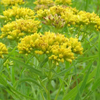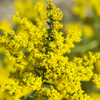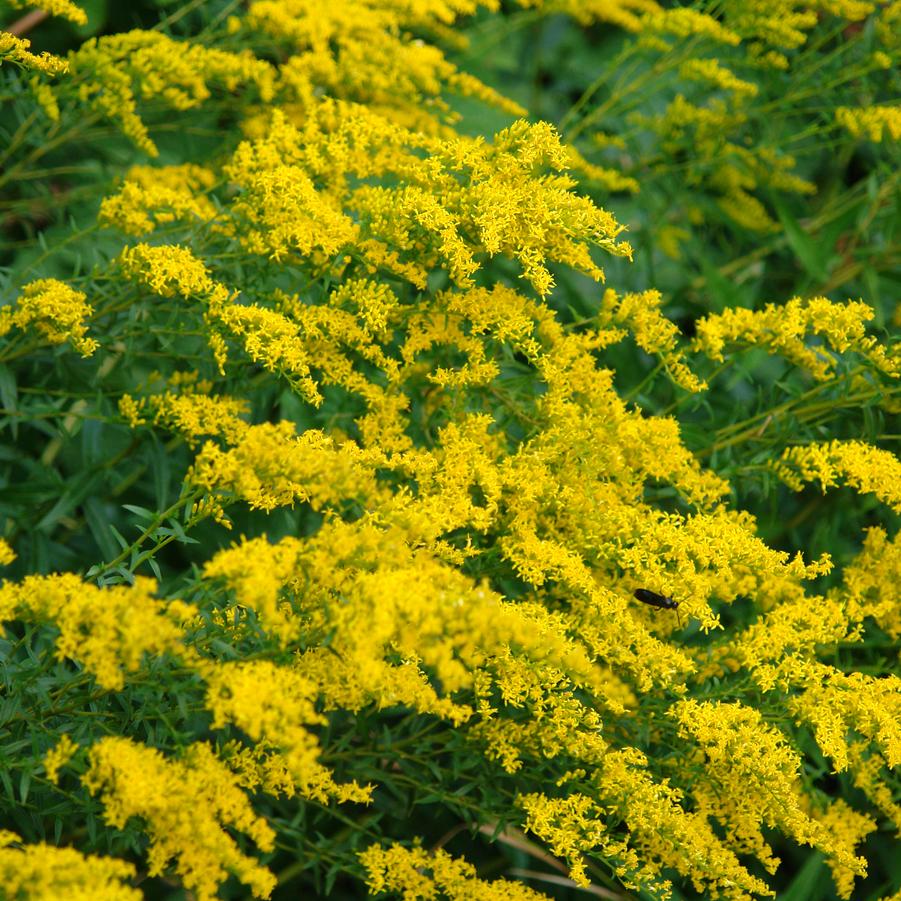
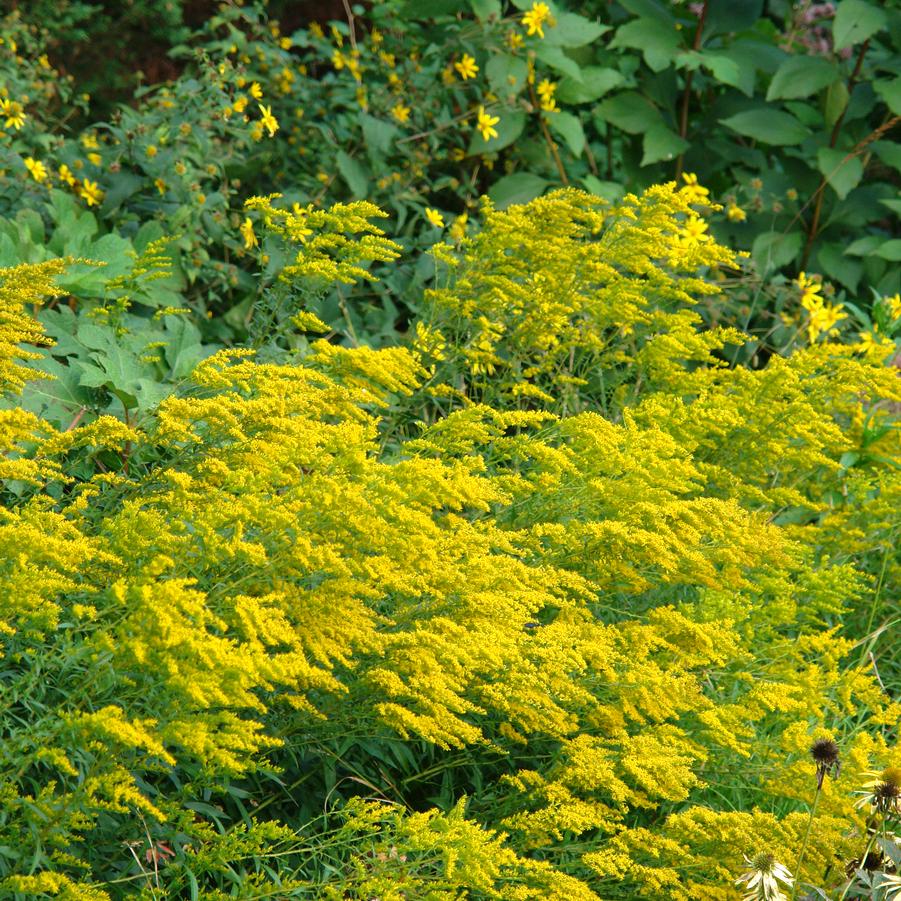
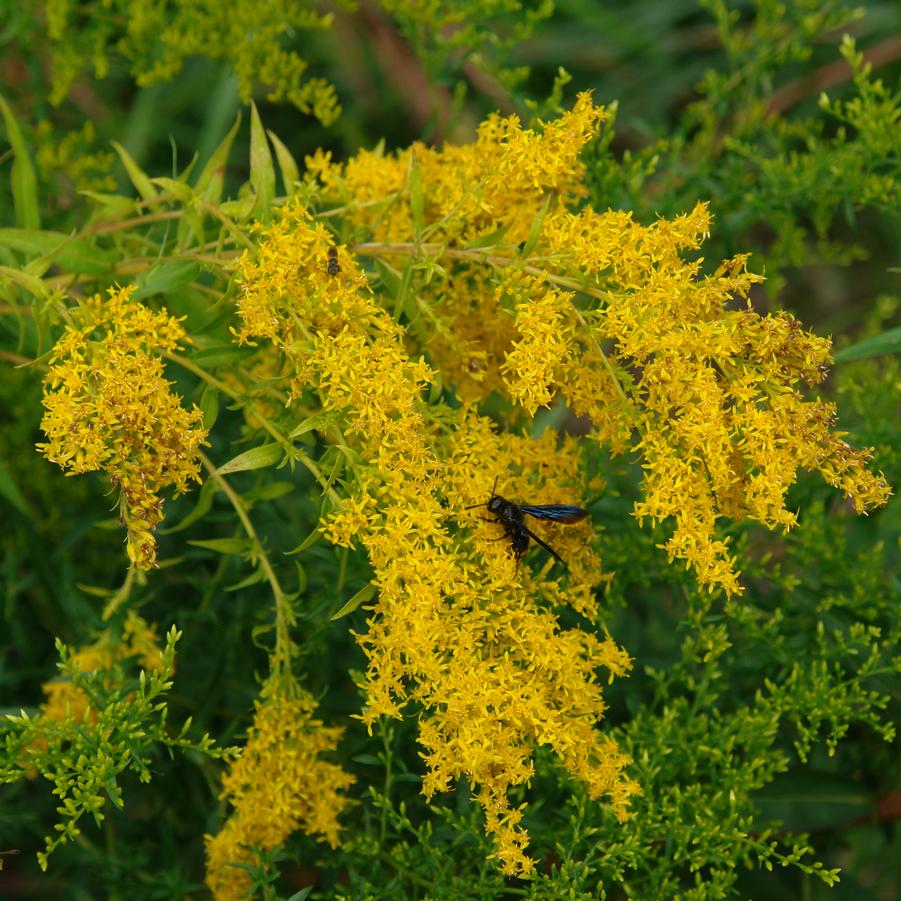



Plant Calculator
Enter the approximate length and width of the area you will be planting and click 'Calculate' to determine how many Solidago odora you will need.
Correct and successful spacing is complex and depends on project conditions. We encourage you to call us at 877-ECO-PLUG for project specific recommendations and further assistance.
Solidago odora
anise scented goldenrod (sweet goldenrod)
- Category: Perennial, Native
- Hardiness Zone: 4-9
- Height: 2-4 Feet
- Spread: 1-2 Feet
- Spacing: 12-18 Inches
- Bloom Color: Yellow
Wonderfully fragrant leaves give off an anise scent when crushed, reminiscent of licorice candy! The lance-shaped leaves are a glossy, smooth dark green. S. odora has a tidy, clump-forming habit and is not weedy or aggressive in the garden. Attracts butterflies, bees, ladybugs, lacewings and other beneficial insects. Its high ecologial value and handsome appearance make it a valuable addition to wildflower gardens, meadows and naturalistic borders.
Green Infrastructure
| • | Meadow/Prairie |
Plug Type
| • | Landscape Plug™ |
Attributes
| • | Native to North America |
| • | Drought Tolerant |
| • | Clay Tolerance |
| • | Cut Flower |
| • | Edible |
| • | Fragrant |
Propagation Type
| • | Open pollinated |
Additional Information about Solidago odora
Solidago odora is covered in plume-like gold flowers from late August to September. The lanceolate, rough foliage grows upright, about 2-4’ tall and 2’ wide, and earns its moniker by the anise scent when the foliage is crushed. Traditionally used in teas, sweet goldenrod is a wonderful addition to the garden, tolerating a wide variety of soil types from heavy clay to sandy soils.
Anise-scented goldenrod grows in thin soils of savannas, pinelands, and dry woods from Texas to Florida, north to Missouri, and east to New Hampshire and New York. Performing well in full sun to light shade and average to sandy, poor soils, Solidago odora is adaptable. It is generally very pest and disease resistant. Unlike other plants in the genus, S. odora is well-behaved, spreading slowly by creeping rhizomes or seed but nowhere as aggressively as S. canadensis and its ilk. Once established, it is drought-tolerant.
Goldenrod is a favorite for many pollinator species. S. odora attracts butterflies, bees, ladybugs, lacewings and other beneficial insects. Additionally, it is a larval host plant for a native leaf beetle, leafhoppers, and several flies. Adding this plant in conjunction with other goldenrod can lengthen your blooming season, prolong pollinator nectar sources, and provide habitat. Small birds such as goldfinches and Indigo buntings enjoy the seeds and the foliage is necessary forage for young woodland animals.
Growing & Maintenance Tips for Solidago odora
Best in full sun but will grow in light shade. Performs well in sandy soils and tolerates clay soils. Drought tolerant. Its high ecological value and handsome appearance make it a valuable addition to wildflower gardens, meadows and naturalistic borders.

